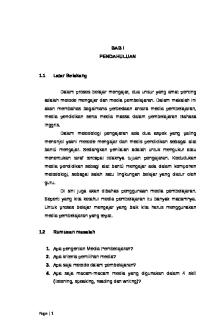CBR bahasa inggris bisnis PDF

| Title | CBR bahasa inggris bisnis |
|---|---|
| Author | Hotma Liana Siagian |
| Course | Bahasa Inggris |
| Institution | Universitas Negeri Medan |
| Pages | 24 |
| File Size | 284.9 KB |
| File Type | |
| Total Downloads | 140 |
| Total Views | 551 |
Summary
Download CBR bahasa inggris bisnis PDF
Description
CRITICAL BOOK REVIEW Subject : BAHASA INGGRIS BISNIS Lecturer : Sabda Dian Nurani Si Siahaan. ahaan. S. S.Pd., Pd., M.B.A
Aranged By: GROUP 1
1.
ALEXANDER STEVANUS SINULINGGA
(7213260036)
2.
BERTA LIPAINI MANULLANG
(7213560028)
3.
HOTMA LIANA SIAGIAN
(7212660002)
4.
BOY LUISFIGO SINAGA
(7213260043)
5.
ARTA SINAGA
(7213260022)
ENTERPRENEUR ENTERPRENEURSHIP SHIP STUDY PROGRAM FACULTY OF ECONOMY STATE UNIVERSITY OF MED MEDAN AN 2021
FOREWORD
Praise our thanks to God Almighty for the blessing that we can complete this task. We also wish to thank our lecturer who has given me the opportunity to make critical of this book. The purpose and purpose of this critical creation is to develop our ability to know the critical of this book. This CBR is prepared with the hope that it can increase the knowledge and insight of all of us. If in this assignment there are many shortcomings and mistakes,We apologize because actually we are knowledge and understanding is still limited. Therefore, we are really look forward to suggestions and constructive criticism from readers in order to complete this assignment. This paper is far from perfect, for that we need kiritic and suggestions that are constructive. Finally we thank all my colleagues who have motivated me in completing this paper. With the task in making this paper we was motivated to perform we obligations as a student that is learning to be better. Finally, we hope that this Critical Book Report can be useful for readers and for me in particular, we are very thank you for your attention.
Medan, October 2021
KELOMPOK 1
TABLE OF CONTENTS FOREWORD
2
TABLE OF CONTENT
3
BAB FRELIMINARY
4
A. Background
4
B. Purpose
4
C. Benefit
5
BAB II IDENTITY OF BOOK
6
A. Identity Of Main Book
6
B. Identity Comparison Of Book
6
BAB III SUMMARY OF BOOK
7
A. Main Of Book
7
B. Comparison Of Book
8
BAB IV ADVANTAGES AND WEAKNESS OF BOOK
12
A. Book Of Advantages
12
B. Book Of Weakness
12
BAB V CLOSING
13
A. Conclusion
13
B. Suggestion
13
CHAPTER I INTRODUCTION 1.1 The Background The development of science is minimal due to the low interest in reading students at this time. Criticizing journals is one way that can be done to increase the relevance of reading interest. Criticizing Journals (Critical Journal Review) is an activity to review a journal in order to know and understand what is presented in a journal. Basically, journal reviews focus on evaluation (explanation, interpretation and analysis) of the strengths and weaknesses, what is interesting, and how the journal can change perceptions and ways of thinking as well as a consideration of whether the knowledge gained can increase understanding of a particular field of study. In addition, criticizing journals can also train our ability to analyze and evaluate the discussion presented by the author. So that it becomes a valuable input for other writing creative processes. Criticizing a journal cannot be done if the critic does not read the entire journal. By doing this review, readers can find out the quality of the journal by comparing the work of the same author or other authors and can provide input to journal writers in the form of criticism and suggestions on the systematics of writing, content, and substance of the journal. 1.2 Purpose The objectives in making a Critical Journal Review, namely: 1. Fulfill one of the mandatory tasks given by the lecturer in the Entrepreneurship course 2. Provide an overview to the reader regarding the identity of the journal, the summary of the journal, the advantages and disadvantages of the journal, both in terms of systematic writing, as well as the overall cohesiveness of the journal content and its implications from various aspects. 3. Adding insight to the critics because in the journal presented problems and solutions that will increase our knowledge.
1.3 Benefit The benefits of making a Critical Journal Review, namely: I. As a student engaged in the world of Education. These journals need to be criticized because they can improve students' skills in making good and correct research reports. II. Increase students' knowledge of the theory and application of the results of researchers' ideas so that this knowledge can be a new inspiration for students as prospective teachers in compiling or designing effective learning. Improve the results of the analysis in each journal that will be criticized.
BAB II IDENTITY OF BOOK A. MAIN BOOK OF IDENTITY Title
English For Business Studies A course for Business Studies and Economic Student
Years
2017
Author
Iam Mackenzie
ISBN
-
Date
2017
Publisher
Cambridge University Press
Pages
153
B.SUMMARY BOOK OF IDENTITY Title
How to Write Effective Business English
Years
2019
Author
Fiona Talbot
ISSN
9780749497309
Date
2019
Publisher
Kogan Page
Pages
149
BAB III BOOK OF SUMMARY A. Main Of Book Title: English For Business Studies A Course For Business Studies and Economics Students Unit1 Unit1, The three sectors of the economy, contains an extract from David Lodge's novel Nice Work about the complexity of the economic infrastructure, and an extract from a magazine interview with the economist J. K. Galbraith and a recorded interview with the British Member of Parliament Denis MacShane, both about the future of manufacturing industry in the 'advanced' countries. Unit 2, Management, contains a text definingmanagement, an extract from Robert Cringely's book Accidental Empires about IBM's system of management, and an interview with Steve Moody, the manager of a Marks & Spencer's store. Unit 3, Company structure, includes a text about different organization structures, an extract from a talk by Jared Diamond about the best way to organize companies, and speaking and writing exercises about the advantages and disadvantages of working for large and small companies. Unit 4, Work and motivation, has a text which summarizes various theories of motivation, and another extract from the interview with Steve Moody, in which he explains how he motivates his staff, and a case study about motivation.
Unit 5, Management and cultural diversity, contains a text about cultural differences in different parts of the world, and a number of discussion exercises enabling learners to consider their own cultural beliefs, Unit 6, Recruitment, considers how companies recruit staff, and how business students should go about finding their first job. It also includes advice about writing CVs, and an interview with Gill Lewis, formerly director of human resources at Nestlé, who talks about women in management. Unit 7, Labour relations, has another interview with Denis MacShane, about the role of trade unions, an extract from Bill Bryson's book Notes From a Small Island about a trade union, and a text about labour relations in different countries. Unit 8, Production, has exercises about capacity and inventory decisions in production management, a text about the just-in-time production system, an interview with Alan Severn, the quality manager at Arcam Ltd, a producer of hi-fi equipment, and a role play about a product recall. Unit 9, Products, contains a text about product and branding policy, and an interview with Jogishwar Singh of Tégé, a company launching a new fast food product, and writing and speaking exercises about vending machines and m-commerce, the use of mobile phones to operate vending machines. Unit 10 10, Marketing, includes a text defining marketing, and a further extract from the interview with Steve Moody of Marks & Spencer, about a hypothetical marketing failure and the possible remedies, and a case study about market research. Unit 11 11, Advertising, has a text about how companies advertise, a questionnaire concerning whether companies should advertise, examples of radio commercials, and an exercise requiring the learners to make their own radio commercial. Unit 12 12, Promotional tools, includes a second extract from the interview with Jogishwar Singh, in which he discusses the promotional strategy used in the launch of Fresh Fries, and a text and case study about promotional tools. Unit 13 13, Accounting and financial statements, contains a text defining different types of accounting, an interview with Sarah Brandston, an American tax accountant, who talks about her job, and an exercise based on authentic financial statements from Nokia, the mobile phone manufacturer. Unit 14 14, Banking, comprises a text defining different types of banks, and a role play in which the learners Unit 15 15, Stocks and shares, incorporates a text about how companies issue stocks
and shares and why people buy them, an extract from a television financial news report, and exercises on the vocabulary of financial markets. Unit 16 16, Bonds, contains a text and an interview with Richard Mahoney of J. P. Morgan bank, both explaining the use of bonds. There is also a short extract from Tom Wolfe's novel. The Bonfire of the Vanities. Unit 17 17, Futures and derivatives, includes a text about financial derivatives, an extract from a talk by Lillian Chew, a financial writer and journalist, about their dangers, and an extract from Michael Lewis's book Liar's Poker, about selling options and futures.
Unit 18 18, Market structure and competition, has a text about market leaders, challengers and followers, and exercises about monopolies, oligopolies, cartels, and so on. Unit 19 19, Takeovers, mergers and buyouts, consists of discussion exercises about takeovers, an interview with Max Pocock of Leica, in which he explains why the company was formed by a merger, a text about leveraged buyouts, and a writing exercise practising connectors, based on the Vodafone/ Mannesmann takeover. Unit 20 20, Efficiency and employment, consists of an interview with Kate Barker, a member of the Bank of England's Monetary Policy Committee, about labour market flexibility, and an article from the Financial Times about employment patterns. Unit 21 21, Business ethics, includes a text about the social responsibility of business, and a discussion. exercise requiring the students to give their opinions on various ethical issues related to business. Unit 22, 22 The role of government, contains a discussion about the responsibilities of government, and two texts giving the opposing views of two well-known economists, J. K. Galbraith and Milton Friedman. There is also an interview with Julian Amey of the British Department of Trade Industry, about the ways in which governments can help companies to export.Summary of unit contents Introduction English for Business Studies is an upper-intermediate to advanced level reading, speaking, listening and writing course for learners who need to be able to express the key concepts of business and economics in English. The aims of English for Business
Studies are: to present learners with the language and concepts found in newspaper and magazine articles on business and economics, and in company documents;● to develop reading skills and give practice in the Unit 23 23, Central banking, money and taxation, has an interview with an economist, Gabriel Mangano, about the functions of central banks, and whether they should be independent from government, and a text and discussion and writing exercises about taxation. Unit 24 24, Exchange rates, contains both a text and i an interview with Jean-Christian Lambelet, an economist, about the advantages and disadvantages. of fixed and floating exchange rates. Unit 25, The business cycle, incorporates both a text and an interview with Kate Barker about the causes of the business cycle. Unit 26 26, Keynesianism and monetarism, includes a text and an extract from the interview with Kate Barker about whether the government can or should intervene in the business cycle. Unit 27, International trade, consists of a text about the growth of international trade and the decline of protectionism, an interview with Ajit Singh of bridge versity about the advantages and disadvantages of free trade, and the related issue of unemployment in industrialized countries, and a case study about banana exports. Unit 28 28, Economics and ecology, contains a discussion exercise involving the learners' views regarding ecology, an interview with Marc Keiser, an ecologist, about a system for measuring the environmental impact of manufacturing processes. and consumer goods, and an article from the Financial Times about a futures market for sulphur dioxide and carbon dioxide emissions. Unit 29 29, Information technology and electronic commerce, contains an article from New Scientist by lan Angell, the Head of the Department of Information Systems at the London School of Economics, about the dangers of IT, an interview with Chris Peters, a cinema manager, about marketing via the internet and e-mail, and a role play about traditional retailing and e-commerce. Unit 30 30, Entrepreneurs and venture capital, contains an interview with Ed Coombes, who raises capital. for new companies and a text about entrepreneur.
B.COMPARISON OF BOOK UNIT 1 WHY ARE YOU WRITING? People sometimes think of business writing as a ‘soft’ skill as opposed to the ‘hard’
skills of finance, law, IT, etc. But I think this description is misleading. The label ‘soft’ can give the impression that business writing is an easy skill, and it isn’t. Business writing has a critical impact on the whole business cycle; it can win business, it can lose business and it can communicate the framework by which results can be achieved. So, at the outset of my training workshops, I always take time to ask people why they actually write in their job and what outcomes they seek, individually and as teams. Unless they are marketers by profession, the following aspects of business writing usually: to inform or record to cascade information for compliance to seek information to write specifications to achieve a standard to write reports with recommendations to persuade to promote services. Usually far lower on the list (and sometimes only when prompted by me, on the lines of ‘Aren’t there any other reasons?’), they say:
to engage interest and involve
to get the right results
to sell
to support customers
to improve life for customers
to create a following
to influence
to change things/innovate/disrupt
to enhance brand and reputation
to show our personality
to reflect our values
to eat, breathe and live our vision.
UNIT 2 BUSINESS WRITING FOR TODAY The workplace is quite different. Yes, you certainly need to know how to access the right information and process this when you write. You need to be accurate too. Many companies require you to follow a standard house style. But, increasingly, you may be encouraged to make suggestions about how the house style could evolve, in view of business circumstances and customers’ needs – and changing communication expectations. This is great news for upcoming generations who can make their mark more quickly than ever before! Attention spans are lessening, thanks to the ‘I-want-it-now’ immediacy of the information age. There are fewer occasions when business writing is seen to have the academic-style beginning, middle and end structure (other than in certain formal reports). Seize the opportunity to develop communication skills that you may not have come across previously. Ask readers for feedback on your business English writing. You’ll learn so much. Companies who take the time to do so find that readers routinely comment that: ●they feel patronized by poorly written letters ●they can feel insulted by writers’ lack of attention to the right detail ●they don’t sense the ‘human touch’ in much of the language used in business writing ●they can feel so angered by correspondence that, where they can do so, they’ll walk away from the business concerned ●they dislike unnecessary jargon (words or expressions used by a particular profession or group that may be difficult for others to understand), over-complicated sentences and confusing use of words ●they are offended when their personal details are incorrect.
UNIT 3 QUALITY MATTERS How readers can react to written mistakes Just take a look at two problematic sentences and let’s see how readers might react. 1.Thank you for your order. You are demanded to send payment within 30 days. First of all, the expression ‘you are demanded’ isn’t correct English. It’s better to write something on the lines of ‘Please send payment within 30 days’ or ‘You are requested to pay within 30 days.’ In English there is an expression ‘to demand payment’ but it has a very strong connotation. It’s generally used for the final notice before a company pursues legal action, to collect money owing to it in an overdue account. When the expression is used validly, it would be on the following lines: ‘This is a final demand for payment (within 30 days) of your outstanding account.’ So in our first example we have an outright grammatical mistake. But the wrong tone can also count as a writing mistake. Let’s look at the text again: ‘Thank you for your order. You are demanded to send payment within 30 days.’ Although the reader sees the initial words ‘Thank you’, the next sentence introduces a harsh, accusatory tone. Yet this is clearly one of the first points of contact between customer and company. The order has just been placed: Thank you for your order’ tells us that. So is the customer going to feel that this is a nice company to do business with? I don’t think so. In business, when new customers place their orders, we should make this a very positive experience for them. If a company can’t be bothered to write well here, then the indicators are not good for future business success. Customers usually have a choice: there is likely to be an alternative company that they like to do business with. Which would you choose? 2 .We can certainly provide the services you request in principal. Homonyms are words that have the same or similar sound and sometimes the same spelling as another but whose meanings are different (more on this in Chapter 10). But let’s just take a look here at two words that are frequently confused by native English and nonnative English writers alike. They are: Principal: an adjective generally meaning first in importance; also a noun meaning a chief or senior person, or an original sum of money for investment. Principle: a noun meaning a fundamental truth or quality; a rule or belief governing a person’s morally correct behaviour and attitudes. In the second example, unfortunately the writer has chosen the wrong version of the homonym. The correct word would be ‘principle’. Some readers may not mind this; some will not notice. But some will make a value judgement: this is wrong! It may be unfair but just one wrong word can undermine readers’ perception of a writer’s or a company’s professionalism. It can also distract readers’ attention away from the writer’s key message. Although I’ve ...
Similar Free PDFs

CBR bahasa inggris bisnis
- 24 Pages

13 surat bisnis dalam bahasa inggris
- 31 Pages

BAHASA INGGRIS
- 10 Pages
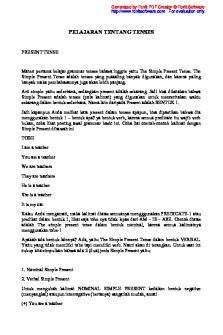
16 tenses bahasa inggris
- 27 Pages
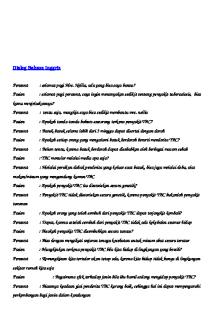
Dialog Bahasa Inggris
- 4 Pages

SKKD BAHASA INGGRIS SMK
- 3 Pages

MAKALAH PEMBELAJARAN BAHASA INGGRIS
- 57 Pages
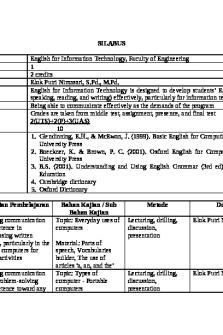
SILABUS BAHASA INGGRIS TI
- 4 Pages
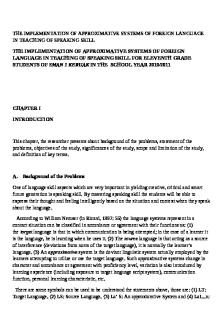
CONTOH SKRIPSI BAHASA INGGRIS
- 24 Pages

Ujian Wacana Bahasa Inggris
- 5 Pages

Tugas bahasa inggris
- 1 Pages

RPP BAHASA INGGRIS
- 8 Pages

SBMPTN Bahasa Inggris
- 7 Pages

PSIKOTES BAHASA INGGRIS
- 7 Pages
Popular Institutions
- Tinajero National High School - Annex
- Politeknik Caltex Riau
- Yokohama City University
- SGT University
- University of Al-Qadisiyah
- Divine Word College of Vigan
- Techniek College Rotterdam
- Universidade de Santiago
- Universiti Teknologi MARA Cawangan Johor Kampus Pasir Gudang
- Poltekkes Kemenkes Yogyakarta
- Baguio City National High School
- Colegio san marcos
- preparatoria uno
- Centro de Bachillerato Tecnológico Industrial y de Servicios No. 107
- Dalian Maritime University
- Quang Trung Secondary School
- Colegio Tecnológico en Informática
- Corporación Regional de Educación Superior
- Grupo CEDVA
- Dar Al Uloom University
- Centro de Estudios Preuniversitarios de la Universidad Nacional de Ingeniería
- 上智大学
- Aakash International School, Nuna Majara
- San Felipe Neri Catholic School
- Kang Chiao International School - New Taipei City
- Misamis Occidental National High School
- Institución Educativa Escuela Normal Juan Ladrilleros
- Kolehiyo ng Pantukan
- Batanes State College
- Instituto Continental
- Sekolah Menengah Kejuruan Kesehatan Kaltara (Tarakan)
- Colegio de La Inmaculada Concepcion - Cebu
